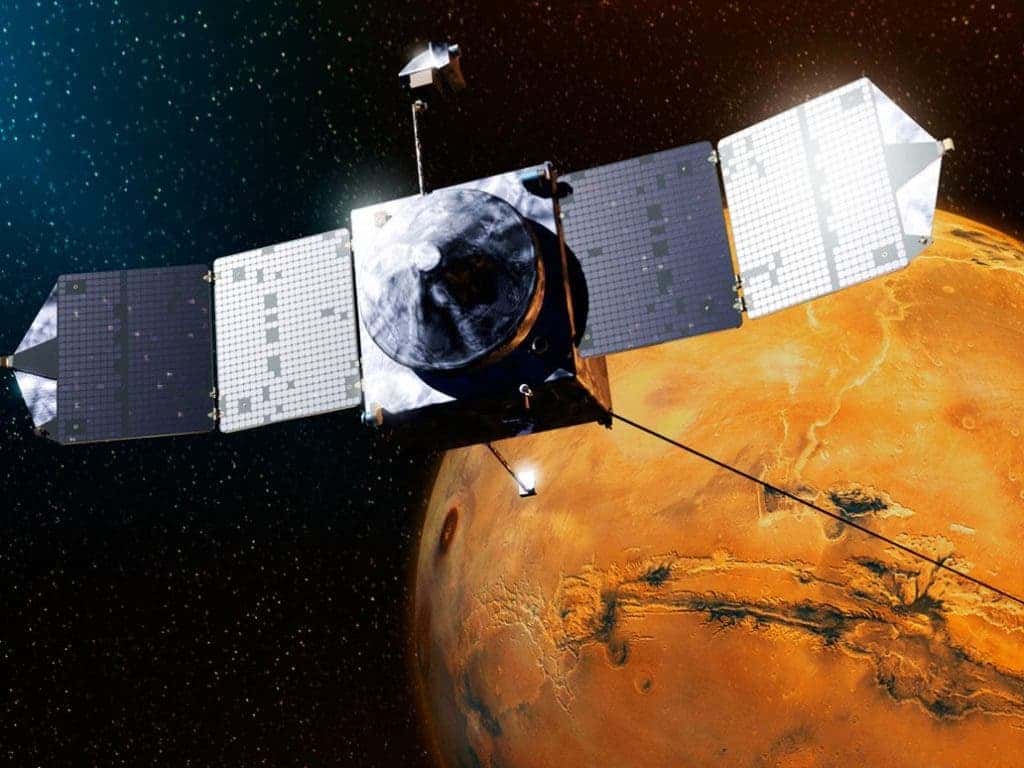A NASA-operated spacecraft orbiting Mars has found traces of electrically charged metal atoms (ions) high in the planet’s thin atmosphere. This milestone discovery will likely help scientists a lot in their efforts to understand the red planet‘s electrically charged ionosphere which today is still rather mysterious.

Billions of years ago, Mars wasn’t all that different from Earth. You might have seen or heard about carved channels and basins on the planet’s surface which are considered telltale signs of flowing water. This is absolutely true. Half of the planet was likely covered by a huge ocean while many rivers dotted the surface, all supported by an atmosphere. Today, although there are some signs of flowing brine water from time to time, Mars is mostly free of liquid water. It’s barren, dead, and quite inhospitable. We don’t know exactly what turned the tide for Mars but we do know its thinning atmosphere, less than 1% as thick as Earth’s, had something to do with it.
One of the tasks of NASA’s Mars Atmosphere and Volatile Evolution Mission is to understand how Mars lost the majority of its atmosphere, and the upper atmosphere is a good place to start.
“Because metallic ions have long lifetimes and are transported far from their region of origin by neutral winds and electric fields, they can be used to infer motion in the ionosphere, similar to the way we use a lofted leaf to reveal which way the wind is blowing,” Joseph Grebowsky of NASA’s Goddard Space Flight Center in Greenbelt, Maryland, said in a statement.
In 2014, during the close passage of Comet Siding Spring, these electrically charged particles were monitored by NASA instruments for the first time but at the time this was seen as a unique event that didn’t necessarily reflect the long-term presence of the ions. Now, the study suggests these ions are found all the time, likely sourced from the constant rain of tiny meteoroids which constantly bombard our neighboring planet.
When these high-speed meteoroids reach Mars’ atmosphere, they become vaporized even though the air is thin. Metal atoms in the vapor trail then get some of their electrons torn away by other charged atoms or molecules present in the ionosphere.
So far, researchers have detected iron, magnesium, and sodium ions in the Martian ionosphere over the last two years. And because the interplanetary dust from which meteor showers stem is common throughout the universe, it’s likely that most if not all planets and moons in the solar system with at least some kind of atmosphere have metal ions. Here on Earth, metal ion layers have been constantly documented using rockets, radar or satellites.
This is the first time, however, metal ions have been confirmed on another planet other than Earth. Moreover, these seem to behave differently on Mars than on Earth where there’s a global magnetic field. This magnetic field together with ionospheric winds forces the metal ions into layers. On Mars, however, there are only local magnetic fields in some regions of the crust which explains why metal ion layers were monitored only in these areas.
“Elsewhere, the metal ion distributions are totally unlike those observed at Earth,” said Grebowsky.
Next, the researchers plan on studying metal ions in greater detail to answer some of the loose ends. For instance, it’s not clear whether the metal ions affect the formation and behavior of high-altitude clouds. We don’t know whether there’s a link between the mechanism that keeps all these ions together is also controlling how atmospheric particles leave the upper atmosphere.
Observing metal ions on another planet gives us something to compare and contrast with Earth to understand the ionosphere and atmospheric chemistry better,” said Grebowsky.


